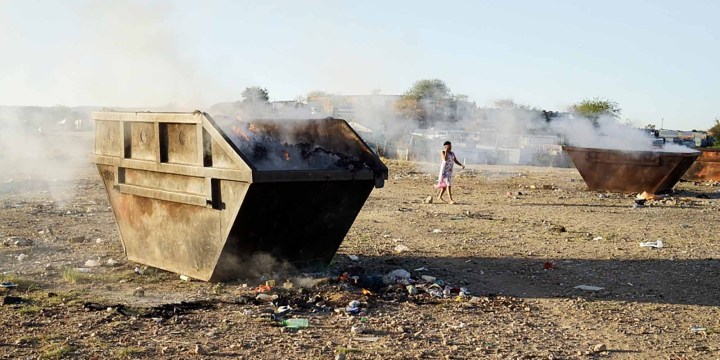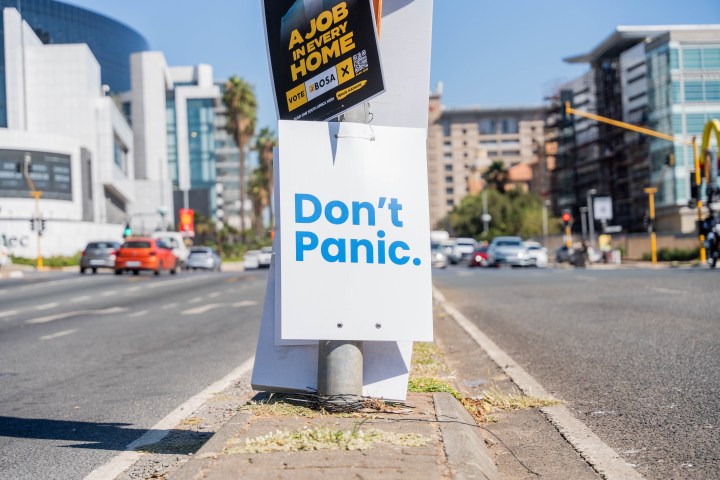BUSINESS REFLECTION
R30-billion: Sanitary products bleeding women dry even though cheaper, greener options available

Women in SA spent more than R2.4-billion on 111 million sanitary products in April this year – that includes pads, panty liners and tampons.
There are several issues around this. One is the “pink tax” – the fact that women have this added (significant) monthly expense men don’t have to budget for. Although sanitary products are zero-rated, which means you don’t have to pay tax on them, the reality is an increased expense that millions in South Africa can’t afford.
For example, a woman who bleeds heavily and buys up to three packs of sanitary pads a month is looking at forking out R50 to R60 per pack. That works out to R180 a month or R2,160 a year.
The other issue is that sanitary products are not recyclable. Menstruating women in SA produce 52.4 million kilograms of sanitary product waste, destined for landfills and sewer systems, annually. Once in the landfill, the sanitary products are biodegradable. Great, right? Wrong.
They only take about 800 years to biodegrade. Yikes to the thought of your bodily fluids lasting several lifetimes longer than you do. So, throwing them away in the garbage is not great for the environment and they can’t be flushed away.
There is the option of burning them, but the gels and other materials in the product then release harmful gases into the atmosphere. Yikes again – what are we putting in our underwear, against our most delicate of delicates?
Anyway, the recommended method of disposal is to put them in a plastic bag, tie them up and dispose of them in your regular garbage, which means it will eventually end up at the landfill.
But coming back to the numbers – you read right – that was R2.4-billion spend on sanitary products in just one month. Multiply by 12 and the expenditure comes out to an annual R30-billion.
To put that in context, R30-billion is also the price tag for:
- Amazon’s cloud services proposed investment in South Africa.
- Eskom’s costs if it burns diesel to avoid stage 10 load shedding.
- The possible cost of the first phase of the uMkhomazi water transfer scheme. This ambitious project involves building two major dams on the third-largest river in KwaZulu-Natal and boring a 33km tunnel beneath mountainous terrain to shift the captured water to a new purification plant northwest of Durban.
- The value of the exports that the South African citrus industry sells, as per the SA Citrus Growers’ Association.
- Dis-Chem’s annual revenue for the year to March 2023 (actual figure was R32.7-billion).
So, what is the answer to our R30-billion recycling problem?
Well, women’s sanitary products seem to be going full circle, with a huge move back towards reusable sanitary pads. Yes – back. My late grandmother (bless her soul) and others of her generation would have used rags or old clothes to stem their monthly bleeding. These reusable cloths would then be washed and set aside for the next month.
Reusable sanitary pads today are far from rags – shaped very similarly to a disposable sanitary pad with “wings” that fasten on the other side with press studs or Velcro strips, and often made out of cotton or other environmentally friendly material.
Other options include menstrual cups, one of which can last up to five years replacing as many as 2,00o pads or tampons for just one woman, and even period panties, which feature a built-in sanitary pad and are available from large retailers such as Mr Price.
Sherie de Vet, founder and chief executive at Palesa Pads reports that one disposable sanitary pad is the equivalent of four plastic bags. When you consider that a woman is expected to go through about 5,000 pads and tampons in their lifetime, this equates to almost 200kg of period product packaging. As with the menstrual cup, one reusable sanitary pad could last five years.
The environmentally friendly options have been around for a while, but are not mainstream quite yet. And most of the companies making these products available are entrepreneurial, female-owned businesses. If they can manufacture the products, there is no doubt that larger multinational manufacturers could easily do the same, increasing the net of environmentally friendly, cheaper sanitary products. So, why haven’t they? Well, their profits would start going into the red (pardon the pun).
Good investing,
Neesa

















A problem well articulated. No mention made of tampons (are they fully recyclable?), what % of women use them and if it’s a possible idea to incentivise their use. In the same problem is baby nappies. Environment activists have a big job ahead, including engaging the manufacturers to meet with women’s organisations at all levels, to bring suggestions forward and increase advocacy to secure early research and action for less destructive, more acceptable products.
Leafline in Bathurst, EC, makes washable sanitary products including pads and nappies, using pineapple fibre.
Don’t for forget disposable nappies. Unfortunately the eco friendly disposables are expensive for some folk.
Menstrual cups or Moon cups were the best thing that ever happened in my menstrual journey. Can’t believe I spent so many years with the smelly, unhygenic alternatives. Go for it any women out there who don’t yet. Perservere through the teething issues and find a lovelier way to get through the month.